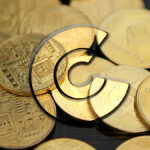Shiba Inu (SHIB), the second-largest memecoin by market capitalization, experienced a significant price surge recently but has seen a decline of 4.5% in the last 24 hours. This downturn is attributed to a notable drop in active Shibarium accounts and daily transactions. Despite the broader memecoin market also experiencing declines, some data suggests that SHIB may rebound due to reduced selling pressure.
What’s Happening with Shiba Inu?
Over the past two weeks, Shiba Inu’s price increased by almost 20%, only to decline again. As of now, SHIB is trading at approximately $0.00001868, reflecting a 4.5% daily drop. This price pullback aligns with a decrease in key metrics within the Shibarium ecosystem, where active accounts fell from 631 to 209, and new daily transactions saw a significant reduction.
Shibarium, launched last August, aims to bolster the Shiba Inu ecosystem by enhancing speed, scalability, and reducing transaction costs. Despite several milestones being achieved recently, further advancements are deemed crucial for SHIB’s potential price increase, according to industry experts.
Why is SHIB Dropping?
The recent price drop in SHIB could also be influenced by the general downturn in the memecoin market. Notable memecoins like Dogecoin (DOGE), Pepe (PEPE), and Bonk Inu (BONK) are all experiencing significant declines, with the market cap dropping nearly 2% on the day. Among the top memecoins, only dogwifhat (WIF) showed a 3% increase.
Potential SHIB Recovery Insights
– Reduced selling pressure due to a shift to self-custody methods.
– Significant upgrades, including a new user interface for better wallet compatibility.
– Continuous development milestones in the Shibarium ecosystem.
– Industry experts highlighting the need for further advancements for price increase potential.
Despite the current downturn, some data points to a potential revival for Shiba Inu. CryptoQuant data indicates a negative net flow in the SHIB market over the past week, suggesting a shift from centralized platforms to self-custody, which is generally seen as a positive sign, reducing immediate selling pressure.













